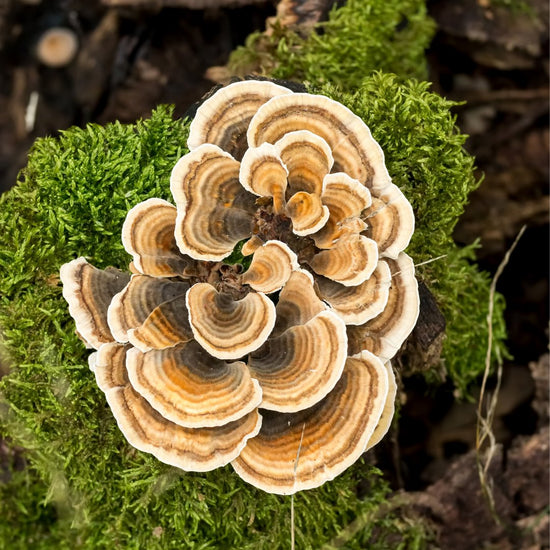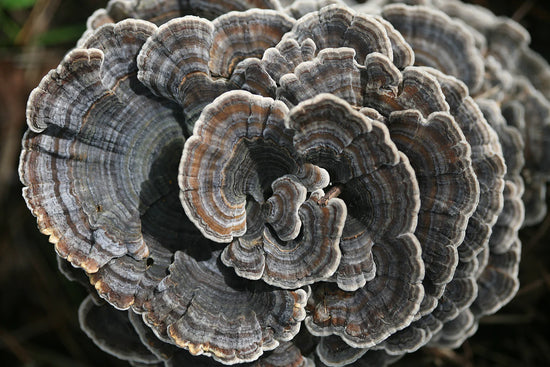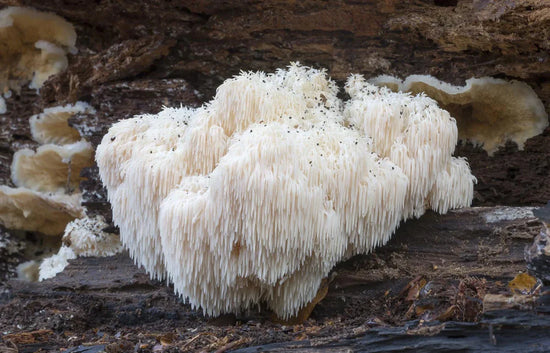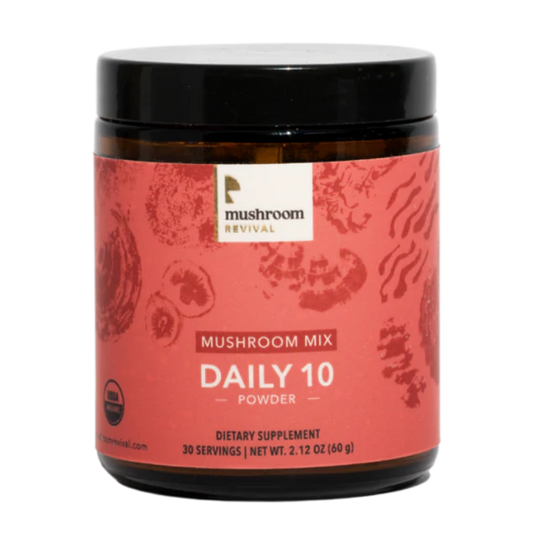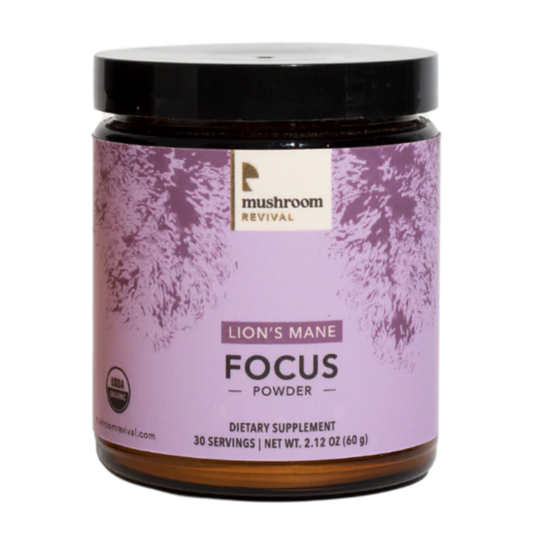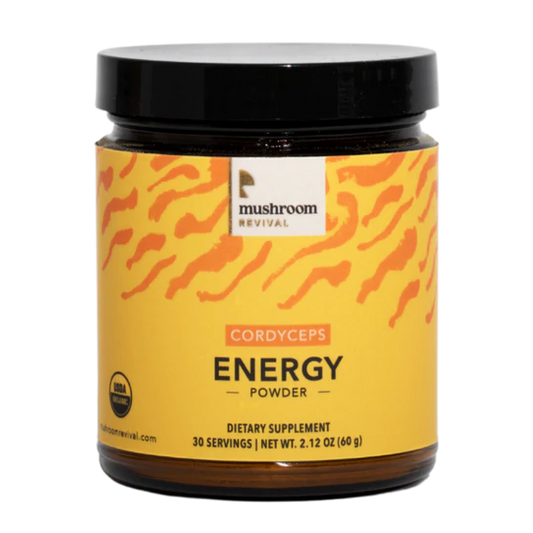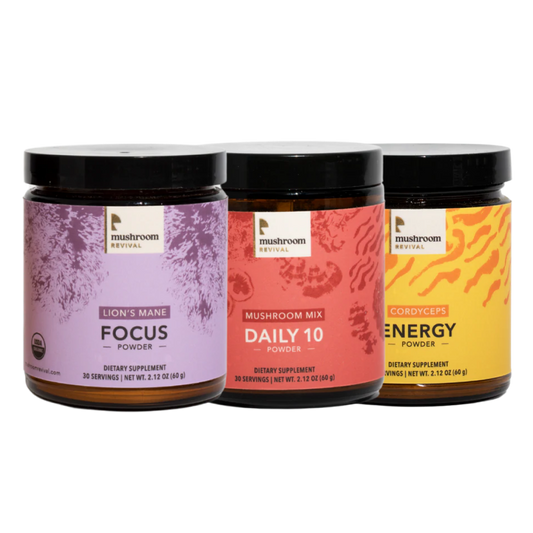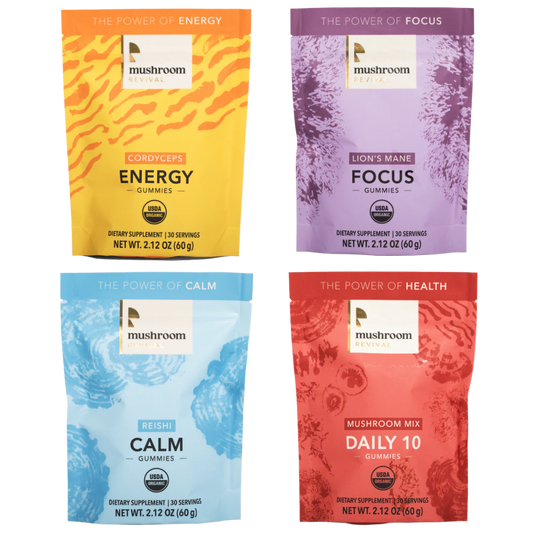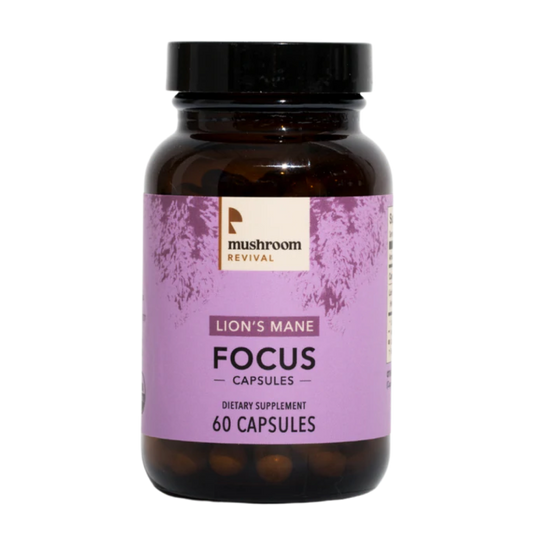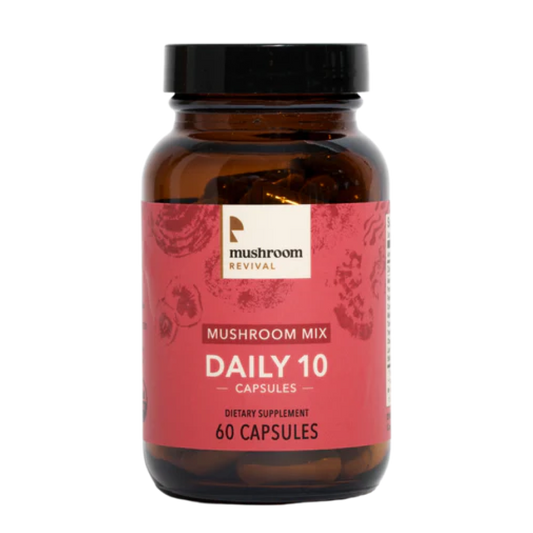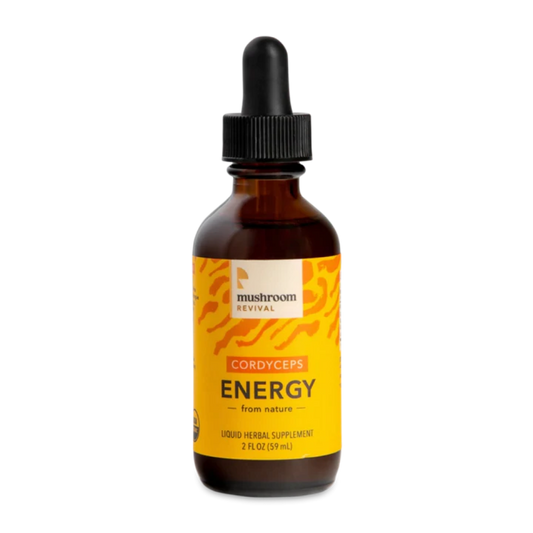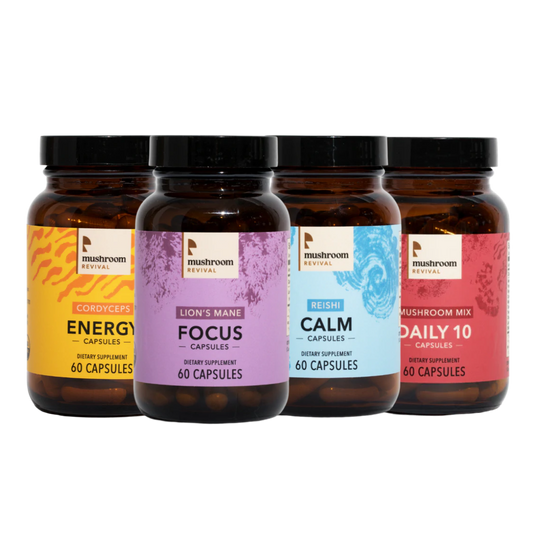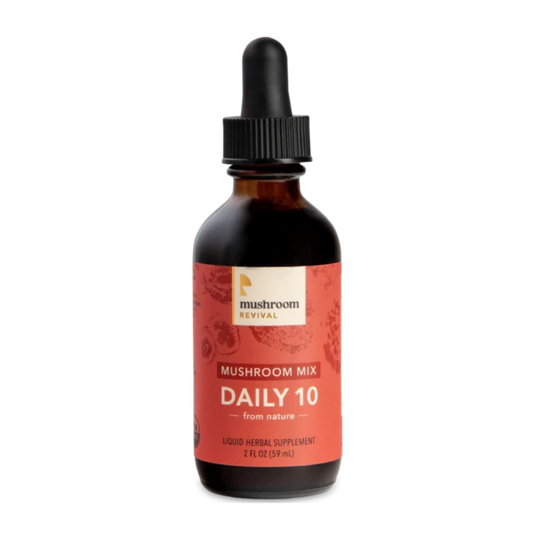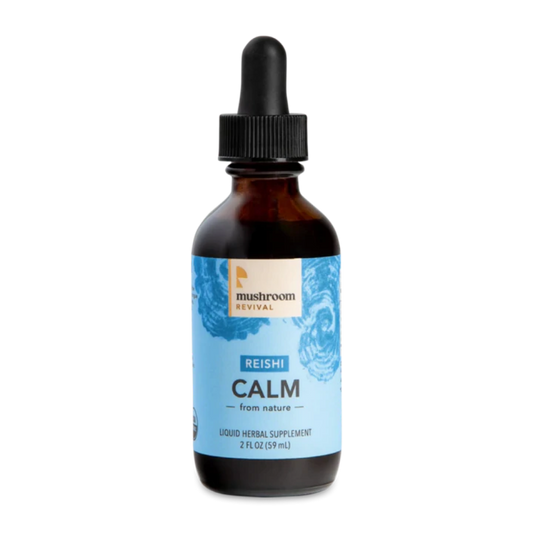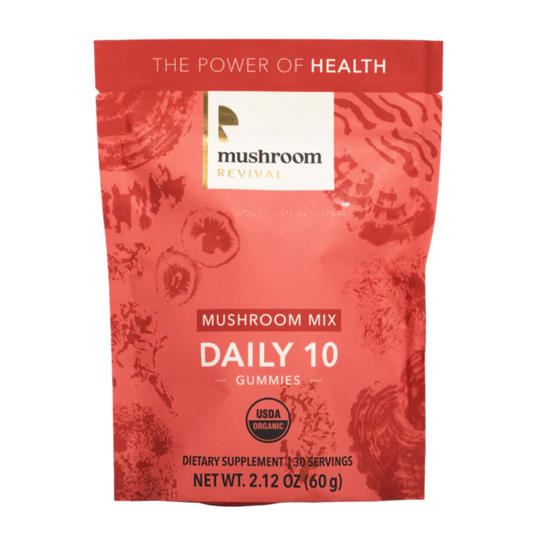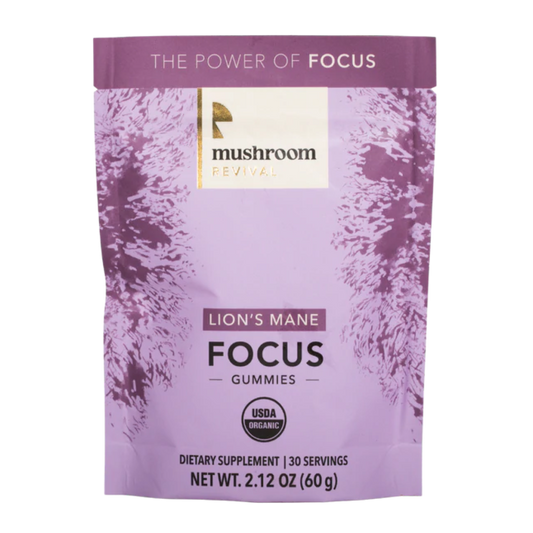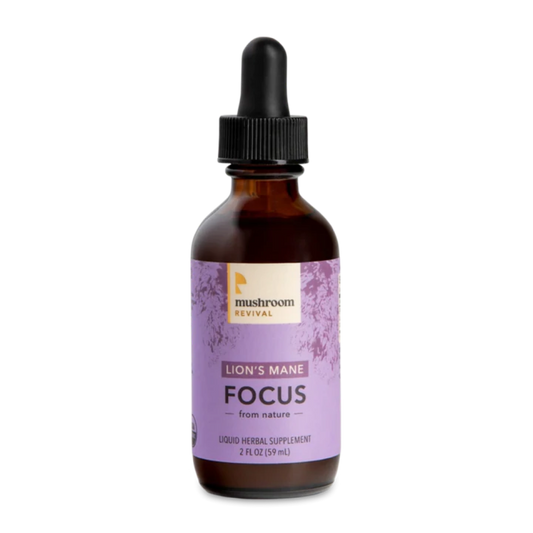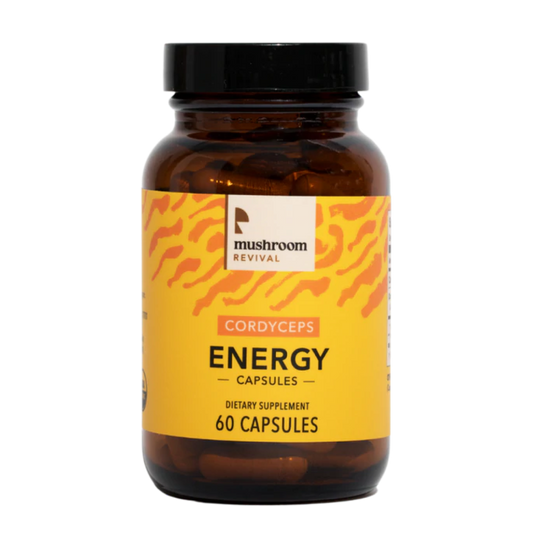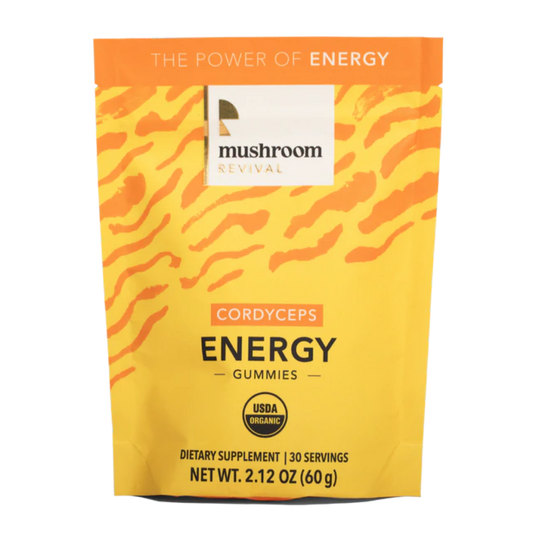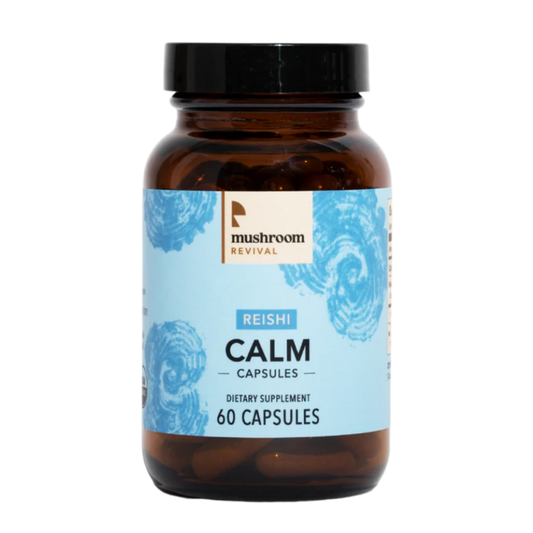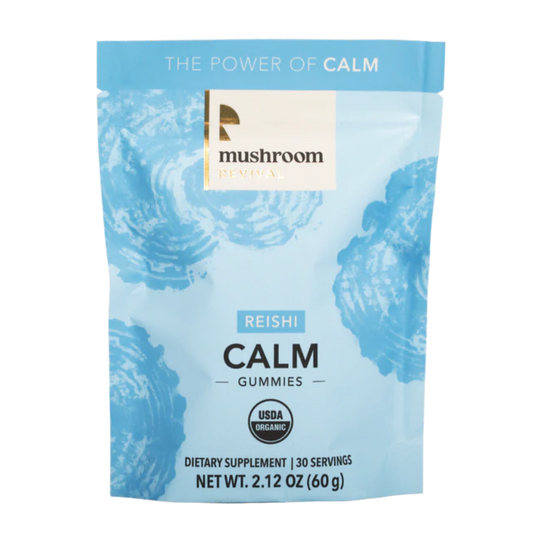How To Make Mushroom Powder And Incorporate It Into Your Diet
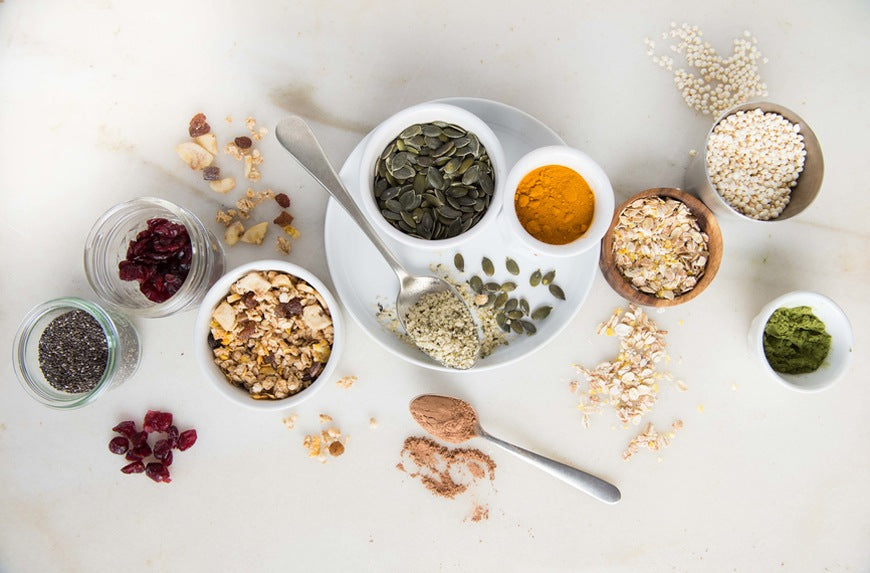
Mushroom powder is a convenient and nutritious way to add the benefits of functional mushrooms to your diet. This article provides tips on how to make functional mushroom powder at home, as well as how to incorporate it into your diet.
Mushrooms are a versatile and flavorful ingredient that can add umami to any dish. They are also packed with nutrients, making them a healthy addition to your diet. Mushroom powder is a convenient way to add mushrooms and their nutrients to your food.
What Is Mushroom Powder?
Mushroom powder is made using mushrooms that have been dehydrated and blended to create a powder consistency. Good quality mushroom powders are also extracted so all the beneficial compounds are bioavailable for the body. Making mushroom powder can help you find an easier way to intensify the flavor of your dishes with little preparation, and certain functional mushroom powders will also give you health benefits beyond the nutritional benefits.
Many mushroom powders are made using functional mushrooms due to their health-supporting properties. Functional mushrooms also have a wide range of nutritional benefits that can give your overall well-being a good kick!
The mushroom powder can be sourced from a reputable supplement provider, or you can try making some homemade mushroom powder. When making homemade mushroom powder, the world is your oyster! You can cultivate your unique flavor palette by making your own mushroom powder mixes, or even adding mushroom powder to salt for delicious, elevated cocktails.
By incorporating mushroom powder into your favorite recipes, you can support cognitive, immune, and gut health - and instill a sense of zen and harmony within your body. Discover how dried mushrooms can elevate both your health and your recipes with umami flavor and richness.
Types Of Mushrooms Used To Make Mushroom Powder

There are many different types of mushrooms to choose from when creating a mushroom powder. You shouldn't just consider the flavor profile of the mushrooms when making your choice, as it's essential to also be familiar with the health support that each type of mushroom is known for.
For instance, you might incorporate lion's mane mushrooms to instill a nutty and ever so slight seafood-type flavor into your powder. But, if you've been feeling that dreaded 'brain fog' creeping up on you lately, they also offer you wonderful cognitive support to ensure your memory and focus are as tight as a drum!
To help you choose the right mushrooms for your needs, consult our mushroom guide to learn about the different types of mushrooms and their potential health benefits.
The Dehydration Process
To make mushroom powder, you must first dehydrate the mushrooms. Dehydrated mushrooms are brittle and can easily be ground into a fine powder using a blender. To make this powder as potent as possible you can also extract it with both hot water and alcohol and then when you evaporate off the liquid and dehydrate the powder again it is super bioavailable for all the wonderful health benefits.
Selecting and Preparing Fresh Mushrooms for Dehydration

When selecting mushrooms for dehydration, it is important to choose organic mushrooms whenever possible. This will help to ensure that the dried mushrooms are of the highest quality and that they contain the maximum amount of nutrients.
You can use a single type of mushroom or a mixture of different types of mushrooms to dehydrate. If you choose to use a mixture of mushrooms, make sure that the flavors complement each other. To get a feel for the taste of different types of mushrooms, try frying them up in a pan before dehydrating them.
Once you have selected your mushrooms, you need to prepare them for dehydration. Be sure to remove any dirt or debris from the surface of the mushrooms. Next, you need to remove the stem butts from the mushrooms if they contain any dirt or growing media.
Once the mushrooms have been cleaned, you need to cut the mushrooms into thin slices. This will help them to dehydrate evenly. You can cut the mushrooms into slices of any thickness, but it is generally recommended to cut them into slices that are no more than 1/4 inch thick.
Methods For Dehydrating Mushrooms

There are several methods for dehydrating mushrooms, so choose the one that works best for you.
Oven
By preheating your oven to around 150 degrees Fahrenheit, you can create the perfect temperature for your mushrooms to dry without worrying about burning or cooking them. Place the mushrooms on a baking sheet and let them crisp and crunch up for an hour before flipping them over and settling them back in for another hour.
Air-Drying

You can air-dry mushrooms if the conditions are warm and dry enough. If it’s hot out, you’ll be able to place them in the sun to dry and they’ll be ready in about 3 hours. Keep in mind that the sun's strength should be at least 6 or above to use this method.
Dehydrator
Using a dehydrator is the easiest and most efficient way to dry mushrooms on your own and is the best method for drying them in bulk without worrying about your energy or gas bill. You should leave them in the dehydrator for between 3 and 8 hours until they are completely dry. To stimulate quick drying, you should consider slicing up the mushrooms into thin slices.
Grinding And Straining Mushrooms
Once you've dehydrated your mushrooms, you can begin grinding them to create a fine powder. The dried mushrooms can be ground by taking the following steps:
Using A Food Processor Or Blender
Use your trusty food processor or blender to give your dried mushrooms a blitz, and make sure they're chopped down into a fine powder.
Remove Clumps To Achieve Desired Consistency
To remove clumps and achieve the desired consistency, sift the dried mushroom powder through a sieve.
Extraction
This step is optional but highly recommended. You can put the mushroom powder in a mason jar with 95% ethanol, or as high proof as you can get your hands on. A good ratio to start is 1 part mushrooms (1 gram) to 5 parts ethanol (5 ml). Make sure to shake the jar once a day for at least 30 days. After 30 days you can strain the liquid and add the mushroom powder to a pot of water at a ratio of 1:10, and simmer for a couple of hours. You can then combine both liquids to bring the alcohol level to 35% to make a tincture to use, or add the alcohol to your tea pot and continue simmering until all the liquid has evaporated and you’re left with a paste at the bottom of the pot. You can then take this paste and put it on some wax paper to put in the oven or a dehydrator similar to how one would make fruit leather and then once dried you can blend it again into a powder. This step is a lot more work but you’re left with a dual extracted highly potent and bioavailable functional mushroom powder similar to ones you would find on a supplement shelf.
Proper Storage Of Mushroom Powder

Once you have successfully made your own mushroom powder, store it properly to ensure that it stays fresh and flavorful. After all, making such a fine powder is no small feat!
Selecting The Right Storage Container
Mason jars and airtight containers are the best way to store mushroom powder, as they keep it completely sealed and protect it from bugs, moisture, and staleness. This will ensure that your mushroom powder stays fresh and flavorful for months to come. Keeping this jar out of direct sunlight is also important to limit the amount of UV rays touching your powder.
Tips For Extending Shelf Life Of Mushroom Powder And Maintaining Flavor
If you want to maintain the potency of your mushroom powder while extending its shelf life, you should consider storing it in the fridge. Cold temperatures help to inhibit bacteria growth and will prevent your powder from heating up and releasing aromas that are better off saved for your best culinary creation!
How To Incorporate Mushroom Powder Into Your Diet: 10 creative and delicious ways
Now that you have your own homemade mushroom powder, the possibilities are endless! You can use it to add umami flavor and nutrients to a variety of dishes, from smoothies to soups to stews.
Smoothies
Are you a fan of the good old morning smoothie? Smoothies are a great way to pack your morning full of delicious nutrients. Add your mushroom powder to a banana, some berries, and some peanut butter. You'll be able to receive all the fantastic health support of mushrooms while enjoying your regular smoothie. Since the flavor of the mushroom powder won't be too potent, it shouldn't interfere with the flavor of your favorite smoothies.
Soups and Stews

What's better than a soup or stew for lunch on a chilly afternoon? You can enhance your soups and stews by using mushroom powder to give your broth a deep, complex flavor - this works particularly well for a scrumptious mushroom soup. The rich and earthy umami flavor of mushrooms adds more depth to your soups and creates an ultra-warming recipe to soothe your heart on a frosty day.
Sauces
Mushroom powder makes a great seasoning for sauces. Whether you're making a homemade ketchup or bolognese sauce, you can give it a wallop of flavor and nutritional goodness with powdered mushrooms. Simply add it to your recipe with some umami-packed seasoning salt, and you're in for a treat!
Seasoning
Mushroom powder works well with other seasonings to create your dream umami seasoning blend. When a recipe calls for extra flavor, your mushroom seasoning has your back! Simply add a few pinches of salt, pepper, mushroom powder seasoning, paprika, chili powder, and boom! You've got the perfect base seasoning for piri piri or Mexican dishes!
Rice and Risotto
Rice and risotto are often neglected when it comes to flavor, so it's your responsibility to enhance them! Add a little extra flavor to these dietary staples with mushroom powder. Add a few porcini mushrooms and shiitake mushrooms, and you've got the richest risotto you've ever tasted. Everyday cooking doesn't have to be dull if you have the resources to add a signature flair!
Omelets And Scrambles

Who doesn't love a mushroom omelet or scramble? Whether or not you're adding fresh mushrooms, adding a dose of your mushroom powder can compliment any flavor palette for an omelet or scramble, giving it a more complex and deep flavor for a more savory dish.
Dips And Spreads
Guacamole, salsa, or hummus, anyone? Dips and spreads are the staples for any party appetizer spread, and adding a little bit of mushroom powder to your homemade dips will have people wondering what your secret ingredient is! The powdered mushrooms will add a touch of natural, earthy goodness to your recipe that will disappear quickly and have your guests begging for the recipe.
Baking
Who said mushrooms can't enhance your favorite bread? Just imagine the smell of fresh bread wafting through your home, with that yeasty aroma and notes of earthy mushrooms! Try baking classic baguettes or crusty bread enhanced with delectable umami and mushrooms.
Simply add the mushroom powder to your flour. Depending on how much powder you add, you could create a truly unique color for your bread, too! Get your own signature bread with a completely unique look, aroma, and flavor.
Tea Or Coffee
Mushroom tea and coffee have become increasingly popular recipes in the past few years, and they're incredibly easy! We recommend adding lion's mane to coffee, helping you to sustain your natural energy levels and focus, even after the caffeine crash sets in. Or, why not try adding some relaxing reishi mushrooms to your tea blend?
Reishi mushrooms are renowned for their adaptogenic properties, aiding in your body's natural ability to 'adapt' to occasional stress and instilling you with an overall sense of calm.
Salad Dressing
Salad dressing is a welcome enhancement to plain old lettuce. Why not try making your own salad dressing with your mushroom powder? Just imagine the garlic, mushrooms, and herbs all blending together for a garlic mushroom-esque dressing for the perfect salad!
Conclusion: Mushroom Powder for the Win!

If you're looking for a way to add flavor, nutrition, and inspiration to your diet, look no further than mushroom powder! This versatile ingredient can be used to enhance a variety of dishes, from soups and stews to smoothies and baked goods.
At Mushroom Revival, we believe that mushrooms are the future of health, wellness, and nutrition. We offer a variety of high-quality mushroom powder blends to help you get started. So what are you waiting for? Give mushroom powder a try today!
Mushroom Powder FAQs:
Are you still wondering about mushroom powders? We've got some frequently asked questions here to help you out!
Can I Use Any Type Of Mushroom To Make Mushroom Powder?
You can use any type of mushroom you like to make mushroom powder - so long as they're not poisonous! Even chewy and poorly-textured mushrooms like reishi, which have a dense, chewy texture, can be made into a great-tasting powder with a little effort.
How Much Mushroom Powder Should I Use In My Recipes?
You don't need to use much mushroom powder to get its health benefits. A teaspoon or two per recipe is usually sufficient. However, you can adjust the amount to taste and for desired benefits.
How Can I Choose The Right Mushroom For My Desired Flavor Profiles?
Different mushrooms have different flavor profiles. For example, shiitake mushrooms have a mild, earthy flavor, while portobello mushrooms have a more intense, meaty flavor. When choosing a mushroom powder, consider the other flavors in your recipe and choose a mushroom that will complement them.








